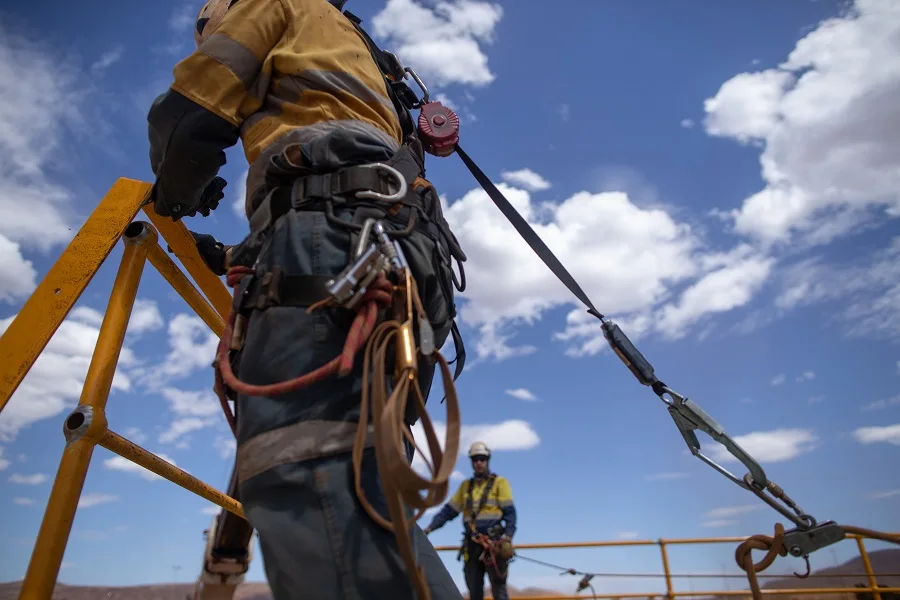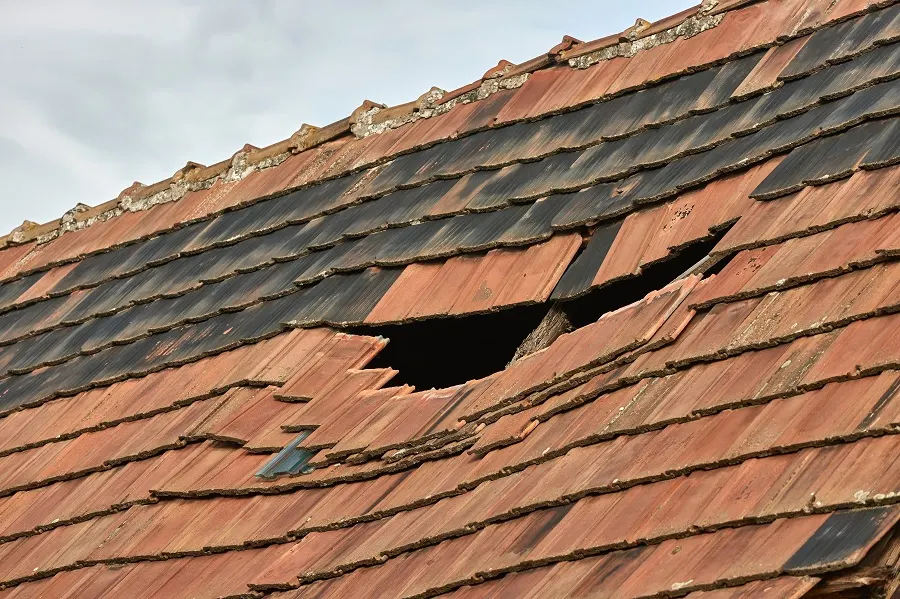As professional roof installers, we’ve installed hundreds of composite roofs throughout Chicagoland. We know the materials, the tools, and the headaches Chicago weather brings to every roof. This guide gives you a full breakdown of what it takes, so you can decide if you’re ready to tackle it yourself or bring in a crew that already knows what to expect.
Understanding Composite Roofing Tools, Materials, and Safety Equipment
Composite roofing uses a mix of recycled materials like plastic, paper, and wood fibers to create a strong synthetic shingle. These shingles are made to hold up in harsh weather while giving your roof a clean, high-end look. Unlike asphalt or slate, they don’t crack as easily and won’t weigh down your structure.
Materials for Composite Roof Installation:
- Composite shingles or tiles (main roofing material)
- Synthetic water-resistant underlayment
- Roofing nails and fasteners
- Flashing materials for roof penetrations
- Ridge caps and starter strips
- High quality materials for ventilation systems
Tools for Installation
.webp)
Using the right tools is the difference between a clean install and a roof that causes problems. If you’re doing this yourself, don’t cheap out — get equipment that can handle real work.
Power tools:
- Pneumatic nail gun with compressor (gun — $25; air compressor — $35-66/day rental)
- Circular saw with carbide blade ($25/day rental)
- Reciprocating saw for tear-off ($20-25/day rental)
- Power drill with various bits ($16-25/day rental)
Hand tools:
- Roofing hammer with magnetic head
- Chalk line for layout marking
- Speed square for angle cuts
- Utility knife with hook blades
- Pry bar for material removal
- Measuring tape (25-foot minimum)
- Tin snips for flashing work
Important note: Tool rental in the Chicago area typically runs $200-400 for a weekend project, but purchasing quality tools can cost $800-1,200 total.
Critical Safety Equipment
Working on a roof without safety gear isn’t a risk — it’s a mistake. Whether you’re doing this yourself or bringing in pros, you need serious equipment. A proper harness system, secure anchors, non-slip footwear, and fall protection are mandatory for any composite roof installation.

Watch the weather: Moisture and ice make Chicago roofs slippery. Fall and spring installations carry extra risk, and safe footing is harder to maintain.
The Complete Installation Process Step-by-Step
The installation process for composite roofing materials follows a precise sequence that determines your roof's long-term performance. Each phase builds upon the previous one, making attention to detail crucial for avoiding moisture infiltration and ensuring your composite shingle roof withstands harsh weather conditions.
Preparation and Safety Setup
Getting organized before you start keeps the job running smoothly and avoids injury. That means staging your materials on the ground, locking in all safety systems, and double-checking weather conditions.
- Install roof jacks every 4 feet near the edge.
- Anchor safety harnesses at the peak.
- Ladder must follow 4:1 rule (4 feet height = 1 foot from wall).
- Keep all materials on ground level.
- Check the weather forecast — halt work if rain is expected within 8 hours.
Pro Tip: Never carry materials up the ladder — use a rope and pulley system to hoist shingles safely.
Existing Roof Removal and Disposal
To get clean, lasting results, the existing materials must come off. Working down from the peak in sections allows for control, and revealing the bare deck helps spot problems early.
- Work in 4-foot sections, top down
- Use a roofing shovel to lift shingles
- Pull every nail and sweep with a magnet
- Remove old underlayment
- Load waste straight into the dumpster
Reminder: Chicago requires a permit to dispose of roofing debris. Budget around $300-500 for that.
Deck Inspection and Necessary Repairs

A thorough roof deck inspection identifies damaged areas that could undermine your entire roofing project. Any compromised decking must be replaced before installing synthetic water-resistant underlayment.
- Check for soft wood using a screwdriver
- Look for loose or warped boards
- Hammer in raised nails
- Gaps between boards shouldn’t exceed 1/4 inch
- Inspect fascia for rot or missing pieces
Repair tip: Replace any weak decking with 1/2-inch CDX plywood. Make sure the edges land on rafters for support.
Protective Underlayment Installation
Installing high-quality synthetic water-resistant underlayment creates a secondary moisture barrier essential for Chicago's freeze-thaw cycles. This step cannot be rushed or skipped without risking future problems.
- Roll out synthetic underlayment horizontally, starting at eaves
- Overlap each row by 4 inches minimum
- Nail every 12 inches along edges, every 24 inches in the field
- Install drip edge over underlayment at eaves, under at rakes
- Apply ice and water shield in valleys and around penetrations
Composite Material Installation with Proper Techniques
Precise installation of composite shingles requires following manufacturer specifications for nailing patterns, overlap measurements, and weather sealing. Improper installation voids warranties and creates vulnerable points for moisture infiltration.
- Start with a starter course, 1/2 inch past the drip edge
- Leave a 1/4 inch gap at the rake edges for expansion
- Stagger joints by at least 6 inches
- Nail 1 inch from edges — avoid overlaps
- Install ridge caps last, moving with wind direction
Quality check: Every five courses, snap a chalk line to confirm everything’s still aligned. These shingles don’t hide mistakes.
DIY vs. Professional Installation: Making the Right Choice
If you're thinking about doing your own composite roof installation, take a step back and really evaluate your experience, available time, and comfort level with risk. Some homeowners attempt the project to save money, but most modern roofing systems are too complex for a casual weekend job.
What DIY Installation Really Requires
- Skill level: High — this isn’t beginner territory.
- Time commitment: Around 3 to 5 full weekends for a standard home.
- Physical effort: Carrying heavy materials, working on angled surfaces for hours.
- Weather delays: Chicago’s shifting conditions can pause your project for days or weeks.
- Tools and gear: Plan to spend $800 to $1,200 for everything you need.
When Professional Installation Makes Sense
Professional composite roof installation becomes essential when dealing with complex architectural styles, multiple roof angles, or homes requiring structural modifications. Experienced roofing professionals can identify and address issues that homeowners might miss, such as inadequate ventilation or subtle signs of moisture damage that could compromise your entire roofing system.
Cost Analysis: What You'll Really Pay
Looking only at material prices won’t give you a full picture. Whether you hire a professional or go the DIY route, you’ll have to factor in labor, permits, disposal, and potential repair surprises. Here’s what to expect:
If your roof is around 1,200 square feet, expect a total professional cost between $12,000 and $20,000. A DIY project may land between $6,000 and $12,000, but mistakes can get expensive fast.
Permits and Local Regulations
Chicago building codes require permits for most roof replacement projects, ensuring your composite roof installation meets safety and structural standards. If you're planning a DIY installation, you'll need to navigate Illinois state guidelines and local regulations that govern roofing projects.
- Roofing permit ($200-400, depending on scope)
- Engineering review if structural changes are needed
- Electrical permit if attic ventilation or fans are added
- Permit for dumpster or debris hauling
- Final inspection before you’re done
- Material compliance with local wind resistance codes
Composite vs. Other Roofing Materials
Choosing between composite roofing and other roofing materials requires understanding how each performs in Chicago's challenging climate. Composite roof lifespan typically ranges from 30 to 50 years, making it a significant investment that should be compared against alternatives like asphalt shingle roofs, metal roofing, and traditional materials.
This comparison shows why many homeowners seeking long-term value choose composite roofing materials over traditional asphalt shingles, despite higher upfront material costs.


.svg)
.webp)


.webp)


